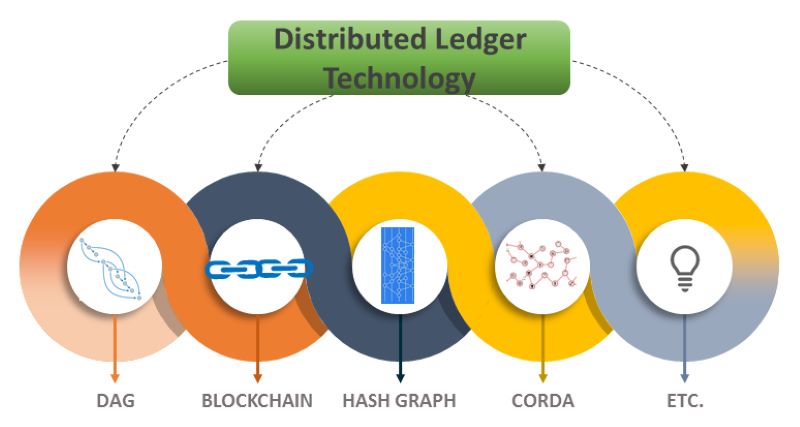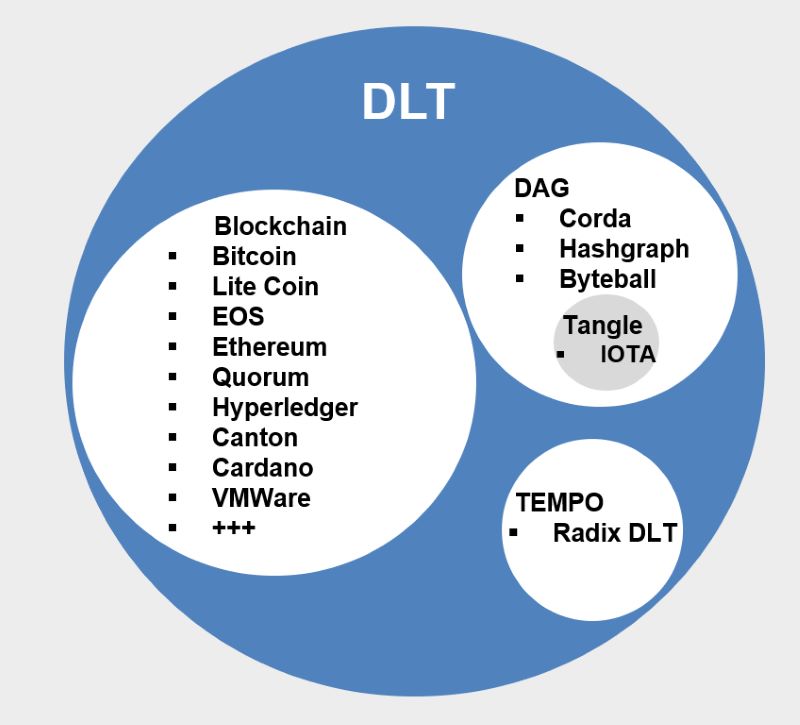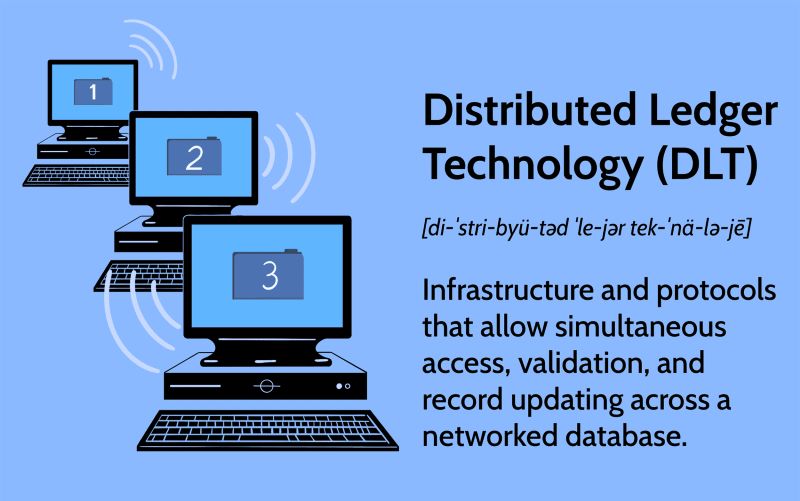The world can’t stop talking about crypto. But to really grasp its surge, we need to dig into what is DLT in blockchain. Step into the realm of digital ledgers, where every transaction sparks a chain reaction of security and trust. I’ll guide you through the maze of this tech, uncovering how it’s much more than a crypto backbone—it’s a revolution in how we do business. From Bitcoin to your morning cup of coffee, DLT is there. Let’s unlock the secrets together.
Understanding the Foundation of DLT and Blockchain Technology
Exploring the Core Concepts of DLT Technology
DLT stands for distributed ledger technology. It’s like a shared record book. Everyone in the network can see the same list of transactions. No one person or group has control over the whole ledger. This way, everyone keeps an eye on the same set of data. It’s clear and safe. With DLT, we can make sure everything is correct without needing a middleman to check it.
In DLT networks, each member has a copy of the ledger, called a node. When a transaction happens, every copy updates. This is key to keeping the network safe and in sync. It’s tough for hackers because they’d have to change every copy at once.
We use DLT most in places like finance and supply chain management. It helps track things clearly from start to finish. Businesses depend on this clarity. DLT platforms vary a lot, but they aim to be secure and easy to scale. This means they can handle more transactions as they grow.
DLT vs Blockchain: Key Differences and Similarities
Many folks mix up DLT with blockchain. Let’s set that straight. All blockchains are DLTs, but not all DLTs are blockchains. A blockchain is a type of DLT that stacks data in blocks and links them in a chain. Each block has a bunch of transactions. When it’s filled, it links to the new block, forming a chain. This makes it really tricky to mess with old transactions.
In other kinds of DLTs, we might not use blocks and chains. But, they still have a network with shared data that updates across all nodes. This makes it extra secure.
Blockchain is famous because of Bitcoin and other crypto. People notice blockchain a lot because it’s the tech behind these coins. Yet, DLT isn’t all about currency. It’s handy in loads of other ways too.
Now, in a blockchain, everyone can often see each other’s transactions. That’s not always the case in other DLTs. Some let you choose who can see what. They can be private or public. Public means anyone can see the data. Private means control over who sees and who updates the ledger.
Decentralization in DLT takes power from one source and spreads it out. This brings folks some sweet benefits. We’re talking about more security and less chance of single points of failure. If one part messes up, the network keeps ticking.
For businesses, using DLT can mean fast, cheaper, and more honest deals. DLT in finance is huge for this reason. It changes the game by cutting out unnecessary steps and people in financial services.
Overall, DLT is super cool because it builds trust in an automatic, high-tech way. Imagine, no need to rely on a person to promise that your deal is solid. The network itself gives you that thumbs up. Consensus mechanisms in DLT help with this. They are the rules that all nodes follow to agree on what the ledger should look like.
Smart contracts in DLT also change things up. They auto-run the deal rules you set when conditions are right. This means less waiting and no mix-ups on agreements. It’s a faster, smarter way to do business in a connected world.
Architectural Aspects of DLT Systems and Their Impact on Business
Types of DLT Systems and Decentralization in DLT
When you hear about DLT, or distributed ledger technology, think of it as a big book. Everyone can write in this book if they follow the rules, and once written, you can’t erase it. It’s like a magic book that everyone trusts because it tells the truth, always. This trust is thanks to something called “decentralization.” Decentralization means no single person or group can own or control the book.
There are different types of DLT systems. Some are open to anyone, like a community garden. Others are just for certain people, like a locked diary. No matter the type, DLT systems spread out the power. They don’t let just one person decide everything.
Application of Distributed Ledger Use Cases in Various Industries
Now, let’s talk about how this magic book is used in real life. From banks to big shops, and for people who grow food or make toys, DLT is making waves. DLT in finance helps keep money safe and sound, making sure no sneaky moves go unnoticed. In big stores, using DLT helps keep track of things. It’s like having super vision for every toy and cereal box that comes in and out.
In farming, DLT helps make sure food is fresh when it gets to you. This is because everyone along the way uses the magic book to mark when they’ve handled the food. For making toys or anything else, DLT tracks every part from start to finish. It’s like having a story for each piece, so we know it’s good to play with.
With smart contracts on DLT, agreements work like vending machines. Put in what’s required, like money or information, and out comes the item or service, no wait needed. This kind of DLT turns words into actions without needing a middle person. It’s fast and fair.
Talking about this magic book might seem out of a fantasy tale, but it’s very real in the world of business. DLT is unlocking new ways to do things that we never thought possible. It’s bringing trust where we need it the most. From making sure our food is safe to eat, to knowing that our money is well-handled, DLT is the trusty sidekick for all sorts of heroes in businesses big and small.
The Role of DLT in Enhancing Transactional Processes
Consensus Mechanisms in DLT and Transaction Validation
Picture a group of people nodding together in agreement. That’s the heart of how DLT makes sure each money move checks out. DLT stands for distributed ledger technology. It makes a team of computers work together to agree on updates. This team work is called “consensus mechanisms.” Now, why should this matter? Well, in a world buzzing with digital trades, a safe and sure way to say “yes, this is legit” is gold dust.
Let’s cut to the chase: consensus in DLT means all users agree on ledger updates. It’s a seal of approval for blockchain transactions. With DLT, you don’t need someone in the middle checking. The system does the heavy lifting, spotting true deals from fakes. We call these trusty checkers “nodes” in DLT speak. So why’s this better than the old way? It slams the door on tampering. With everyone watching, it’s like having the world’s best security system.
DLT tech uses unique forms of agreement to green-light transactions. Some count on sheer computing power. Others rely on digital currency stakes or owners’ say-so. This harmony creates a super-secure, fraud-tough system. That means we can trust trades without batting an eye, cutting out costly overheads.
How Smart Contracts and Peer-to-Peer Networks Revolutionize Business Operations
Imagine shaking hands on a deal, but with a twist: your promise turns into an iron-clad digital pact. That’s a smart contract for you. Smart contracts auto-execute deals on DLT networks. No fuss, no muss. As soon as conditions tick – bang – the contract does its thing. Payments flow, ownership hops across, and all that happens without a single paper cut.
Now, mix smart contracts with peer-to-peer networks. You’ve got yourself a revolution in business ops. Peer-to-peer means directly linking up – no random middle fellas. It’s about businesses talking straight to each other, like neighbors over a fence. This slashes wait time, curbs costs, and says ‘adios’ to confusing jumbles.
Peer-to-peer and smart contracts reshape how we see deals. They pump out high-speed, high-trust operations 24/7. They’re twisty-turny mazes where only the straight paths win. Does it scale? You bet. As more join the DLT gang, things just get swifter.
Wrapping up, think of DLT as the unsung hero powering today’s crypto craze. It brings consensus without the chaos, smart contracts without the loopholes, peer-to-peer without the third wheel. Together, they’re transforming our pockets and pushing business into brave new waters.
Future-Proofing Business with DLT Innovations
Embracing Ledger Technology Innovations for Competitive Advantage
Businesses are racing to stay ahead. That’s where DLT technology shines. DLT stands for Distributed Ledger Technology. It’s a fancy term for a shared record book. Think of DLT as a team game where every player keeps score. It helps make sure no one cheats, because all players can see the score at all times.
Now, you might ask, “What’s the difference between DLT and blockchain?” Great question! Blockchain is a type of DLT. Like a square is a rectangle but not all rectangles are squares. Blockchain is famous thanks to Bitcoin, but there are other types of DLT systems too.
These systems work without a boss. There’s no need for a middleman to check the work. Instead, they use a bunch of computers that talk to each other. That’s a peer-to-peer network. Everyone helps to check the work. And smart contracts? They make sure deals go through as planned. If you agree to buy my bike, the smart contract makes sure you pay and I hand over the bike.
The benefits of DLT? Let me count the ways. It’s tough to break, helps keep private stuff private, and makes sure nobody fiddles with the records. That’s all thanks to their strong DLT security features.
Industries from finance to supply chain are paying attention. They know DLT can give them an edge. Why? Well, think about it. If you can show your work is clean and fair, you win trust. Trust is like gold for businesses. Plus, with DLT, things can move faster and cheaper.
Regulatory Compliance and the Integration of Enterprise DLT Solutions
Let’s not forget the rules. Everyone must play by them, even in DLT land. That’s regulatory compliance. So, when a business uses DLT, it must be sure to follow the law. That can sound scary, but it’s like following the rules of the road. It keeps everyone safe.
Enterprise DLT solutions are like custom-made suits. They fit a business just right. But just like with suits, a business needs to pick the right tailor. In DLT, that means choosing the right platform for your needs.
Public vs private DLT is a big choice. Public is open to everyone. It’s like a busy city park. Private is more like your own backyard. What’s best? It depends on what you need. Some businesses want the world to see. Others want to keep things behind a fence.
As for DLT in finance, it’s a big deal. Money matters, right? With DLT, banks and businesses can move money like never before. Fast, cheap, and secure wins the race.
As businesses think about the future, DLT offers a key. It can unlock new ways to work, make money, and build trust. That’s why getting DLT right is so important. It’s not just for today; it’s for tomorrow too. It’s about making a choice to be in the game for the long haul.
Remember, the world of DLT is big and getting bigger. Get on board, and let’s see where this ship sails!
We’ve dived deep into the world of DLT and blockchain. We covered DLT basics and how it differs from blockchain. We explored their architectures, saw how businesses use them, and looked at how they make transactions better. We also peeked into the future, seeing how these techs can keep our businesses ahead. It’s clear: DLT is not just a buzzword; it’s reshaping how we think about data and transactions. With its wide use cases and ability to streamline operations, it’s a tool that can’t be ignored. Keep an eye on DLT. It’s transforming our digital landscape, and you don’t want to miss out. Let’s ride this wave and see where it takes us. What a time to be alive and in business!
Q&A :
What exactly is DLT in the context of blockchain?
Distributed Ledger Technology (DLT) refers to a digital system for recording the transaction of assets in which the transactions and their details are recorded in multiple places at the same time. In blockchain, which is a type of DLT, this ledger is maintained across a network of computers, leading to increased security and transparency.
How does DLT differ from traditional blockchain technology?
While blockchain is a form of DLT, it is distinguished by its structure in blocks and its operation with a consensus mechanism like Proof of Work or Proof of Stake. Other types of DLT may not organize data in blocks or might use different mechanisms for validating transactions, making blockchain a specific subset of DLT.
What are the advantages of using DLT in blockchain?
The advantages of using DLT in blockchain include enhanced security due to decentralization, increased transparency and traceability of transactions, reduction in transaction times, and the elimination of a single point of failure. It also reduces the need for intermediaries, streamlining processes and potentially reducing costs.
Can DLT in blockchain be regulated or is it completely autonomous?
While DLT in blockchain operates on the principle of decentralization, it is not completely beyond regulation. Governments and financial bodies are actively exploring frameworks to ensure that activities on DLT comply with existing laws, including those regarding consumer protection, anti-money laundering (AML), and Know Your Customer (KYC) regulations.
What industries can benefit from the implementation of DLT in blockchain?
Numerous industries can benefit from implementing DLT in blockchain. This includes finance for secure transactions, supply chain management for increased traceability, healthcare for confidential data storage, real estate for transparent record-keeping, and even voting systems for fraud prevention and integrity. The potential applications are vast and diverse, affecting multiple facets of business and governance.





